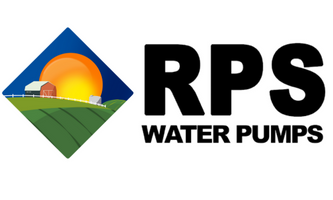

Answering Your Water Pump Questions
with RPS Engineer Mike

How many hours does it take to replace a well pump?
If you’re considering replacing a submersible well pump and it’s your first time, you may have questions about long it may take. We often say a full install only has to be a couple of hours, but is that actually accurate? Let’s chat through each step of our install process and find out for ourselves!
Submersible Well Pump Install Steps
Step 1: Screw well pump end and motor end together - This should take about a couple minutes after looking through the manual we send.
Step 2: Splice submersible well pump wire extension cable onto 6 ft pigtail. - If you’ve never done a splice before go slow to make sure you have a solid connection. After reading the manual again this just takes 10 minutes at a maximum.
Step 3 : Attach safety rope to pump eyelet - This is used to lower the pump so that weight is not distributed on just the pump wire or piping. Another 5 minutes.
Step 4: If using poly pipe, which we recommend, roll out your poly pipe and allow it to relax/warm up. Attach relevant plumbing. Warming up the poly pipe can take a little while, so it may be helpful to do this and then move on to other steps before attaching all plumbing. Let’s allow for 1-2 hours here, but with the assumption that step 5 and our bucket test can also be completed in this period.
Step 5: Assemble well seal and associated plumbing for the top of your well. Thread wire and safety rope through the smaller, secondary hole in the well seal. This step should be accomplished within our 1-2 hour time frame.
Optional Bucket Test: Place the well pump in a large bucket of water with the inlet fully submerged. Wire your pump to it’s control box and the control box to either a GFCI outlet or a breaker box. Once all wiring is completed and the pump is hooked up to AC power, the pump should automatically start pumping. We recommend this test to make sure your wiring has been properly executed. Once you have completed this step turn off the AC power source. This should be accomplished within our 1-2 hour time frame.
Step 6: Lower pump into well, careful to not hit the pump against the sides of the well casing. Depending on how deep the well is and where you’d like to place the pump, this could take up to 10 minutes or so with polypipe, or much longer with rigid pipe. We’ll assume polypipe since rigid pipe needs specailized materials and is normally not suitable for the DIY installer.
Step 7: Now wire in the pressure switch (if you’re using a pressure tank or pressure system). The pressure switch will be between your breaker box and starter box, and will regulate when your pump turns on based on the pressure measured in the water line. The well pump would turn on when your pressure tank pressure is too low, and switch off when it starts to become too high. Let’s assume about twenty minutes to ensure all wiring is in line with our manual.
So with all steps laid out plainly we’re looking at about a three hour install. This isn’t inclusive of breaks, or needing to call our support folks if there’s a question or issue. But we feel confident that the majority of installs can be accomplished within an afternoon, especially if you’ve looked through the manual beforehand and have an accurate understanding of what each of your steps should look like. If you are curious about how much you can save by going the DIY-install route, check out this article about how the average cost of a well pump install.
RPS prides itself in being easily accessible both pre and post sales, so if you have any questions you can go ahead and call us at (855)-560-5670 or email us at help@ruralpowersystems.com. We can chat through each step of the well pump installation process to ensure that you are confident in your abilities to work with our products. We hope to hear from you soon, and look forward to helping where we can!
Take the Next Step to Water Independence
Learn More About Water Pumps
-
 If you’re considering replacing a well pump and it’s your first time, you may have questions about long it may take. We often say a full install only has to be a couple of hours, but is that actually accurate?Read now
If you’re considering replacing a well pump and it’s your first time, you may have questions about long it may take. We often say a full install only has to be a couple of hours, but is that actually accurate?Read now -

How many GPM is a good well pump?
Water needs can differ significantly depending on circumstances, and you may need a submersible well pump with a significantly higher or lower flow rate, depending on household size, irrigation needs, and sprinkler use.Read now -

Can you put in too big of a pressure tank?
When it comes to sizing a well pressure tank, there really isn’t an upper limit as to how big of a tank you can put in. There are some pros and cons to different size pressure tanks, and they can have an impact on the lifespan of your pump.Read now




